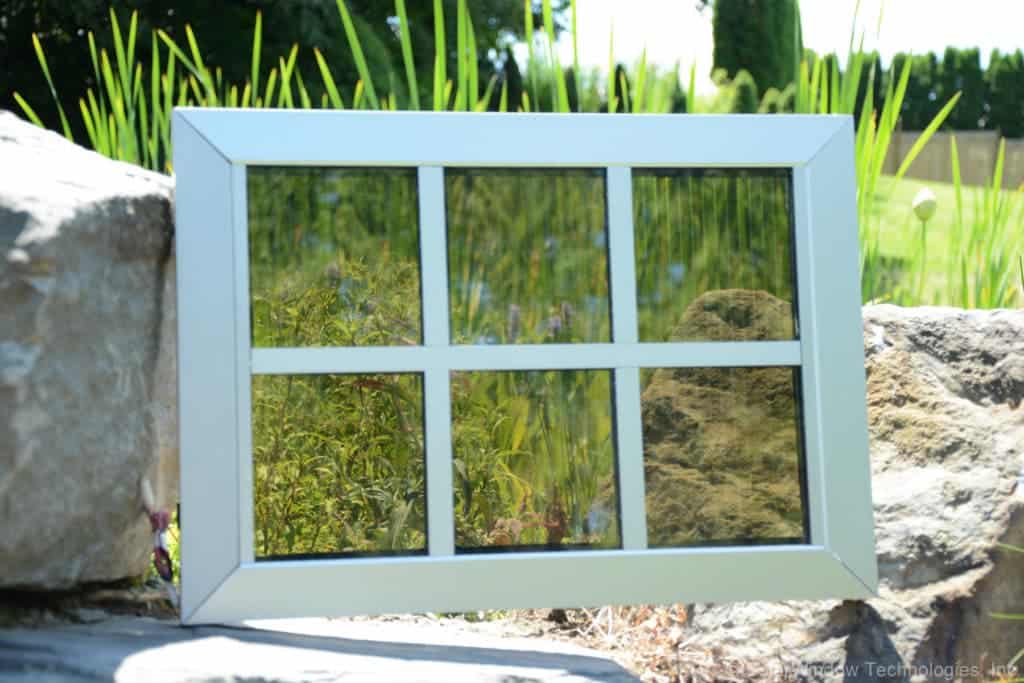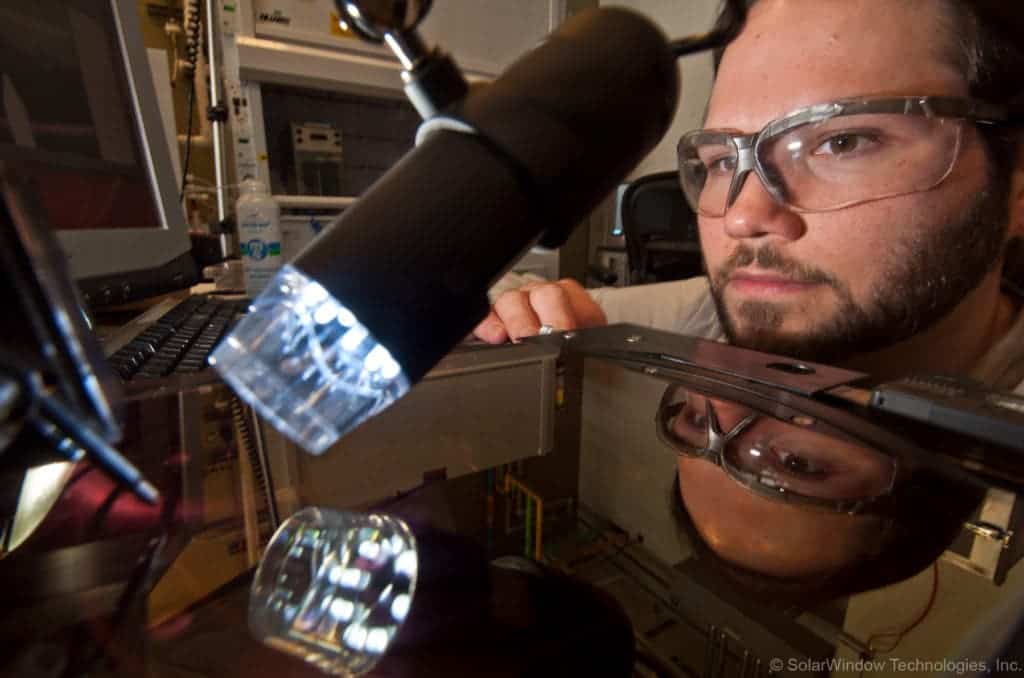SolarWindow Technologies is a Maryland-based company that hopes to provide the world with means to produce “extraordinary amounts of clean electricity”. That’s a pretty ambitious goal. The startup says they can deliver on this promise with its flagship technology — see-through coating which can produce electrical power.

Image captions SolarWindow.
Development of the technology started in 2009. Since then, SolarWindow has created a liquid “organic photovoltaic solar array”, mostly comprised of carbon, hydrogen, oxygen, and nitrogen that can be applied to transparent surfaces. It can come in a variety of colors or neutral tint, all see-through. A transparent mesh of conducting cables transports the energy generated throughout the coating to the sides of the window, from where it’s taken to the grid.
As you probably well know by now, we’re nothing if not green here at ZME Science. So we weren’t about to pass on anyone making such a promise. We just got off the phone with the company’s CEO John Conklin and we’re here with the inside scoop on how to turn skyscrapers, houses, whole cities, into sources of power.
The coatings of power
“The world is at a crossroads between climate change and the depletion of natural resources. In the middle of the crossroads is the ever increasing need for energy by a growing population,” John Conlkin told ZME Science.
“We can take advantage of our lessons learned and create opportunities and solutions for a new, greener tomorrow. Our goal is to commercialize SolarWindow transparent electricity-generating coatings to address that increasing energy demand and contribute to a greener future.”

Image credits SolarWindow.
I have to admit, even after reading up on SolarWindow my first instinct was to consider it an extension of the conventional solar industry. In a way, that’s not wrong — the end result is creating energy from light. But the way each technology goes about it is very different.
When people say “solar energy” what pops into mind are the ubiquitous big blue photovoltaic (PV) panels adorning rooftops or languishing in sunny fields. SolarWindow wanted to take surfaces we already have and make them generate electricity instead. They also designed their technology to be fully transparent, seamlessly integrating into the buildings we have today while discreetly producing power.
With a background in chemical processes, applied coatings, and an early interest in renewables, John helped the company develop a coating which could stick to glass or plastic and generate electricity from the huge quantity of light that passes through our windows each and every day.
How did you start working on renewables?
“I started work with PV since I was very young, in my early days of high school with the boyscouts,” John told me.
His work has come a long way since then. Conventional solar certainly does a lot of good for the environment, but as John explained what SolarWindow’s technology can do the main selling points became apparent. For starters, you don’t have to designate free space for the system — if there’s a window, you apply the coating to it and it will start generating electricity. It also doesn’t require direct sunlight to function. The coating can produce energy even in shaded areas, drawing on diffused light.
“SolarWindow doesn’t rely on direct sunlight like normal PV does. Any coated side of the two buildings will generate electricity even just from diffused light,” he said.
Because of this, SolarWindow can turn an entire skyscraper into a green energy power plant. For a typical 50 story high building, it can churn out 50 times more power than rooftop-installed PVs. The company advertises an under-one-year return on the price of installing the system.
Since most of us don’t live in skyscrapers, I asked John how the technology works for household users. A big part of why SolarWindow can churn out so much power for commercial buildings is that they have a lot of “window”. Typical houses are designed with smaller windows and a lot of walls, meaning there’s less effective space to apply the coating on. But even so, the system does have some advantages over typical PVs.
“We don’t want this to be something only for the rich and powerful,” John said. “[SolarWindow] works with natural or artificial light so it’s not just sunlight. All that light coming from your fixtures, for example, can be used to generate power.”
So while you won’t see the same gross return of power as a household user, SolarWindow can help capture some of the energy that goes about untapped, all around us. You can even install it inside if you’ve got the room.

Image credits SolarWindow.
The more frequent use windows see in households, compared to those in skyscrapers, shouldn’t damage the connectors between the coating and the rest of the electrical wiring, either. The company is working on creating connectors for every type of window frame out there, with systems for typical hinged or sliding frames already available. I’ve also talked to John about the possibility of stacking several layers of glass coated with SolarWindow, and he confirmed that all layers would produce power. Depending on how many panes of glass your windows have, you could get three or four times their effective surface as coating.
And since it doesn’t use light same way as traditional PV technology does, John told me that the coating generates as much power in colder countries where sunlight is weaker as it does in warmer, more sunlit areas.
One really exciting prospect of SolarWindow’s coating is that it addresses one of the key criticisms of traditional solar — their perceived unreliability. PVs only work during the day (for obvious reasons) but because they rely on the sun shining, a cloudy day can tank their output. And there’s not much we can do to change the weather just yet. But, by working with any type of light of any intensity, SolarWindow solves that problem.
It’s a technology with very much potential, and with a little creative, thinking it can generate power from unlikely sources. John told me they’re looking into a way of installing the coating on existing streetlamps, for example. But we could see the coating tailored to space and military applications further down the line.
“The possibilities are endless,” he concluded.
There isn’t any word on the final cost per sq meter of the coating, but John seemed determined to make it as accessible as possible. They also aim to have their product available all over the world in the future.






